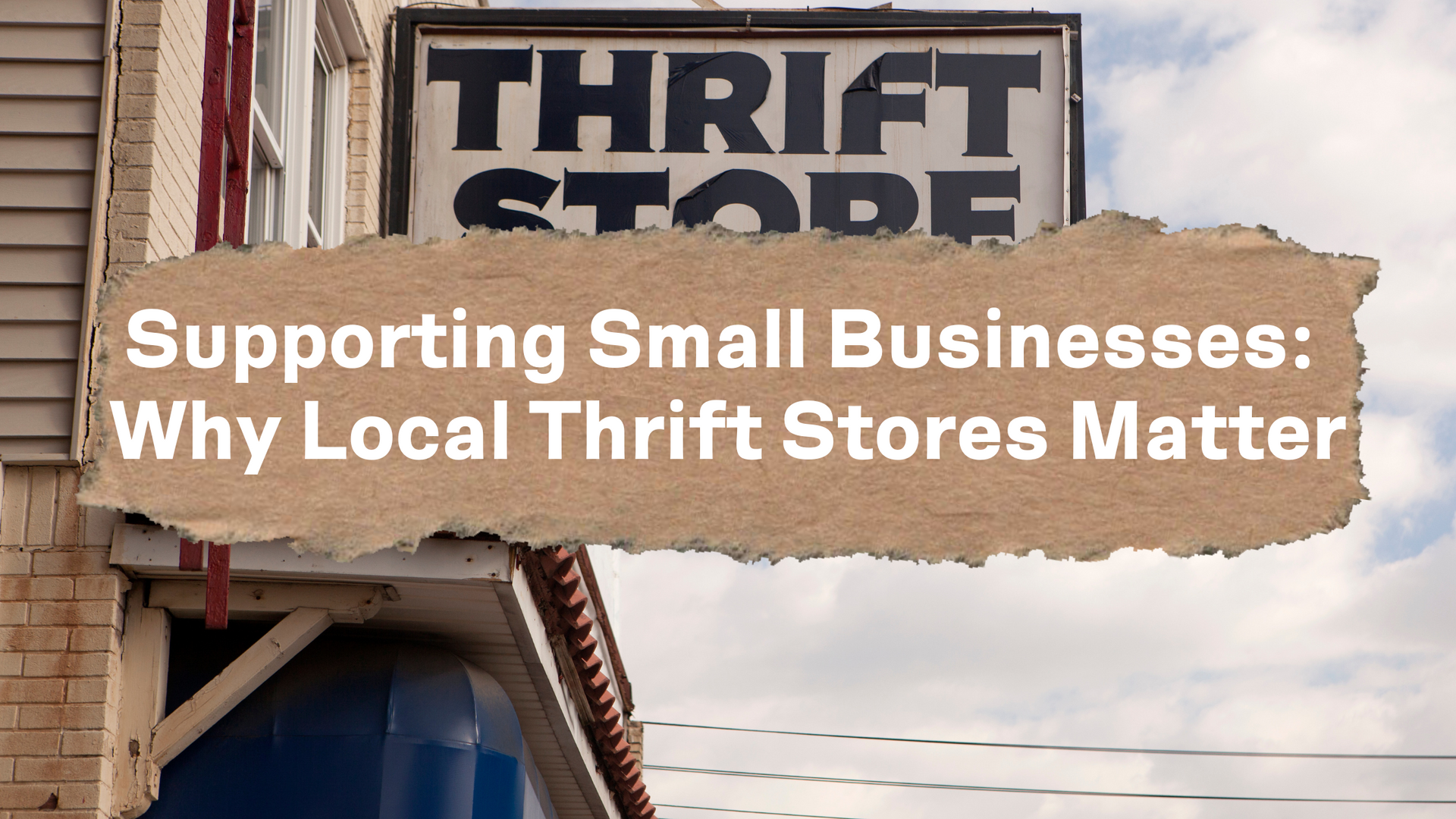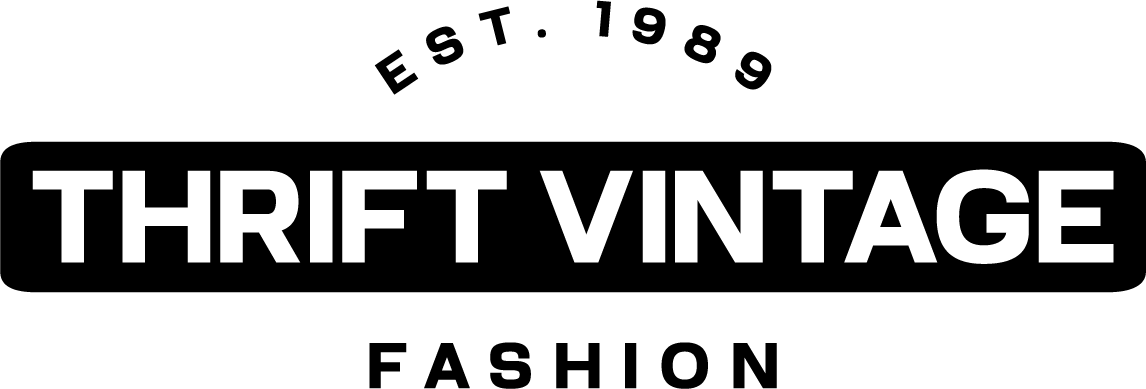
Supporting Small Businesses: Why Local Thrift Stores Matter
In today's bustling marketplace, amidst the allure of fast fashion and trendy brands, a revolution is erupting: the resurgence of local thrift stores and small reselling businesses. Deeply rooted in local communities, these enterprises are the unsung heroes of sustainability, economic vitality, and cultural resurgence. As we delve into their rich history and contemporary impact, it becomes evident why supporting these small businesses is more crucial than ever.
A Journey Through Time
Thrift stores have long been integral to local communities, offering an eclectic array of secondhand treasures and timeless classics. Historically, these establishments served as havens for budget-conscious shoppers and individuals seeking unique finds. From charity-run thrift shops to family-owned boutiques, these stores provided an alternative to mainstream retail, fostering a culture of creativity and self-expression.
The Rise of Vintage Fashion
In recent years, vintage fashion has experienced a resurgence in popularity, permeating mainstream culture and influencing runway trends. What was once tossed aside to the realm of thrift stores and flea markets is now coveted by fashion enthusiasts and influencers alike. The allure of vintage lies in its authenticity and uniqueness—a stark contrast to the homogeneity of fast fashion.
However, with the mainstreaming of vintage fashion comes a double-edged sword. As demand increases, so too does the commodification of vintage clothing. Items once overlooked are now coveted for their rarity and exclusivity, leading to inflated prices and elitism within the vintage community.
Economic Enablers
Local thrift stores are not just places to peruse racks of pre-loved garments; they are economic powerhouses in disguise. Behind the scenes, these establishments create a ripple effect of opportunity, fueling local economies and bolstering entrepreneurship.
Consider the journey of a vintage dress from donation to purchase. A thrift store may rely on suppliers like ThriftVintageFashion.com to restock their inventory. As a wholesale supplier, ThriftVintageFashion.com caters to businesses of all sizes, providing a diverse array of high-quality secondhand clothing. From vintage boutiques to online resellers, small businesses turn to suppliers like ThriftVintageFashion.com to source their inventory, creating a symbiotic relationship that drives economic growth and innovation.
Sustainable Guardians
In an age of heightened environmental consciousness, thrift stores emerge as champions of sustainability. At their core lies the ethos of reuse and repurpose, offering an antidote to the culture of disposability that pervades modern consumerism.
By extending the lifecycle of clothing items, thrift stores and their suppliers like ThriftVintageFashion.com divert countless garments from landfills, mitigating the environmental toll of textile production. Moreover, these establishments serve as educational platforms, raising awareness about the environmental impact of fashion consumption and promoting conscious consumer habits.
Crucially, thrift stores and their suppliers are the lifeblood of smaller resellers who embody the ethos of sustainability in their practices. These resellers, be they vintage aficionados curating collections or online entrepreneurs repurposing thrifted finds, rely on suppliers like ThriftVintageFashion.com as their primary source of inventory. In doing so, they breathe new life into forgotten garments, infusing them with a sense of history and character that transcends trends.
Community Connectors
Beyond their economic and environmental contributions, thrift stores and their suppliers serve as catalysts for community building and social cohesion. Step inside a thrift store, and you'll find more than just racks of clothing; you'll discover a melting pot of stories, experiences, and shared connections.
Environmental Impact Statistics
Did you know that by shopping at thrift stores and supporting small resellers, you're helping to reduce the fashion industry's carbon footprint? According to recent studies, the production of new clothing generates approximately 10% of global carbon emissions. By extending the lifespan of clothing items through thrift shopping, we can significantly reduce this environmental impact. In fact, for every 1,000 tons of clothing reused, approximately 2,500 tons of CO2 emissions are prevented.
Tips for Thrift Shopping
Navigating a thrift store can be an adventure in itself, but with a few insider tips, you can make the most of your shopping experience. Start by setting a budget and keeping an open mind—you never know what treasures you might find! Take your time to explore each section, paying attention to quality fabrics and unique details. Don't be afraid to try on different styles and sizes, and remember to scrutinize items for any signs of wear or damage. And finally, don't forget to thank the staff—they're often passionate thrift enthusiasts themselves and can offer valuable insights and recommendations.
Community Events and Initiatives
Thrift stores and small resellers are more than just places to shop; they're vibrant hubs of creativity and collaboration. Keep an eye out for upcoming events and initiatives in your area, from clothing swaps and DIY workshops to charity drives and pop-up markets. These events not only provide opportunities to connect with fellow thrift enthusiasts but also support local charities and organizations. Whether you're a seasoned thrift shopper or a curious beginner, there's something for everyone to enjoy.
A Call to Action
As consumers, we have the power to make a difference with our purchasing choices. By supporting local thrift stores, small resellers, and their suppliers like ThriftVintageFashion.com, we not only discover unique fashion finds but also contribute to the greater good of our communities. Let's celebrate the spirit of entrepreneurship and sustainability by embracing the treasure trove of possibilities that thrift shopping offers. Together, we can create a more inclusive, sustainable, and stylish world for generations to come.
Conclusion
In a landscape dominated by mass production and consumerism, the resurgence of thrift stores and vintage fashion represents a return to authenticity and individuality. These small businesses, deeply rooted in local communities, offer more than just clothing—they provide a gateway to self-expression and sustainability. At ThriftVintageFashion.com, we are proud to be a part of this movement, supporting local thrift stores and small resellers as they continue to thrive and innovate. By partnering with us, these businesses gain access to a diverse range of high-quality secondhand clothing, enabling them to curate unique collections and serve their customers with excellence. As consumers, let's continue to champion the spirit of entrepreneurship and sustainability by supporting our local thrift stores, small resellers, and their suppliers. Together, we can create a more inclusive, sustainable, and stylish world for generations to come.
